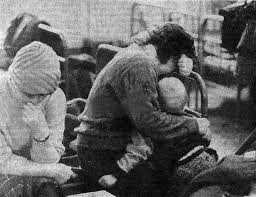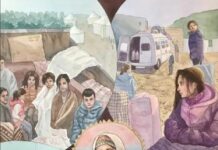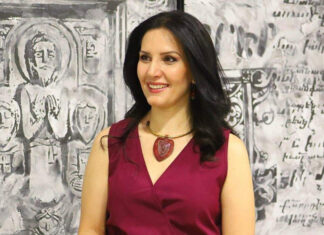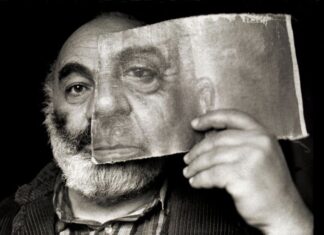 PROVIDENCE, R.I. — “My mom would listen to Sayat Nova and cry because it would remind her of her dad, who survived the Genocide. And then she herself became a refugee. It was as if Armenian history was repeating itself, Aregak Babayan, former resident of Azerbaijan, who currently lives in the California tells in the documentary called “A century long Genocide: Black January of Baku.” Another formerly Azerbaijani-Armenian, Roman Safaryan’s ancestors kept the documents regarding their property around lake Van in Western Armenia before the Armenian Genocide. By the end of 20thcentury, Roman himself became a refugee — leaving his property in Azerbaijan. Roman was forced to migrate to the United States.
PROVIDENCE, R.I. — “My mom would listen to Sayat Nova and cry because it would remind her of her dad, who survived the Genocide. And then she herself became a refugee. It was as if Armenian history was repeating itself, Aregak Babayan, former resident of Azerbaijan, who currently lives in the California tells in the documentary called “A century long Genocide: Black January of Baku.” Another formerly Azerbaijani-Armenian, Roman Safaryan’s ancestors kept the documents regarding their property around lake Van in Western Armenia before the Armenian Genocide. By the end of 20thcentury, Roman himself became a refugee — leaving his property in Azerbaijan. Roman was forced to migrate to the United States.
Between 1988 and 1990 the Armenian population of Azerbaijan’s capital Baku suffered pogroms, massacres, deportation and plunder. The culmination of violence came about January of 1990, the final stage, after which once prosperous Armenian community of over 200 thousand Armenians practically ceased to exist.
The reason for the massacres in Baku was the same as for the Genocide of 1915: being an ethnic Armenian.
Marina Grigoryan, Larisa Alaverdyan and Haykaram Nahapetyan under the auspices of Public Relations and Information Center of the Staff of the President of the Republic of Armenia, prepared a documentary on the Armenian pogroms of Baku. The film “A Century Long Genocide: Black January of Baku” depicts stories of former Azerbaijani-Armenians, who migrated to America following the pogroms. Another interesting parallel between the 1915 Genocide and Baku pogroms of 1990: in both cases the United States would be the most active international player in terms of rendering humanitarian help to the Armenian survivors. Around 55,000 Armenians of Azerbaijan came to the United States following the pogroms.
“Our project is not only an accusation addressed to Azerbaijan and its ongoing policy of aggressive Armenophobia. It is also a warning about the danger of racism and xenophobia against any nation, as well as about the impermissibility of a repetition of genocide in any place against anyone,” Marina Grigoryan said.
Over 40 Azerbaijani-Armenians from 6 different states were interviewed by the Armenian crew. A portion of their recollection is reflected in the documentary, the rest will be published in a separate volume.








